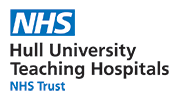- Reference Number: HEY1481/2025
- Departments: Corporate
- Last Updated: 28 February 2025
Our hospitals are under intense pressure. Every day we have more than 150 patients in hospital beds who are well enough to go home but need to stay with us until social care packages are put in place. Limited bed capacity has become a major challenge, impacting our Emergency Department and Acute Assessment areas. When we cannot move patients out of these areas and into beds on our wards, ambulance crews have to wait outside our hospitals for many hours to hand over their patients. This has a knock-on effect because ambulances cannot then respond to 999 calls meaning the seriously ill or injured are waiting too long for help.
What we need to do
To address these very serious problems, we are trying to support and improve patient flow to and from our wards. To aid this during the day, we are introducing a system of safely caring for suitably identified patients in a “Temporary Escalation Space” (TES) who are waiting for beds.
What that means for you
You will have been assessed by a senior doctor and nurse who have deemed that your condition is stable. You will be taken a ward but will be asked to wait in a chair or on a trolley/bed in a temporary space until a bed area on the ward is available for you. We will try to make you as comfortable as possible while you are waiting, and you will be monitored by staff throughout this time. We sincerely apologise that this step has become essential. Please be assured it has been assessed as a safe option for you based on your clinical condition.
Why we need to do this
Using this Temporary Escalation Space method during this busy period creates space in our Emergency Department so we can continue to assess and treat patients with the most serious illness and injuries. It means these patients are not waiting in ambulances and means ambulance crews can hand over patients to the Emergency Department without delay and return to their duties including responding to 999 calls. This is a risk-based decision, and we believe is the best and safest way for us to manage the flow of patients in our hospitals at this time.
What happens next
On the ward you will be met by the team who will look after you until a bed becomes available and you will be monitored and cared for until you are moved into a bed. If you have any concerns, please speak to the nursing staff or the Matron on the ward and they will do their best to help you.
Thank you for your support as we do our best to support and keep all patients safe who require our help. Once again, please accept our sincere apologises that this step has become essential.

